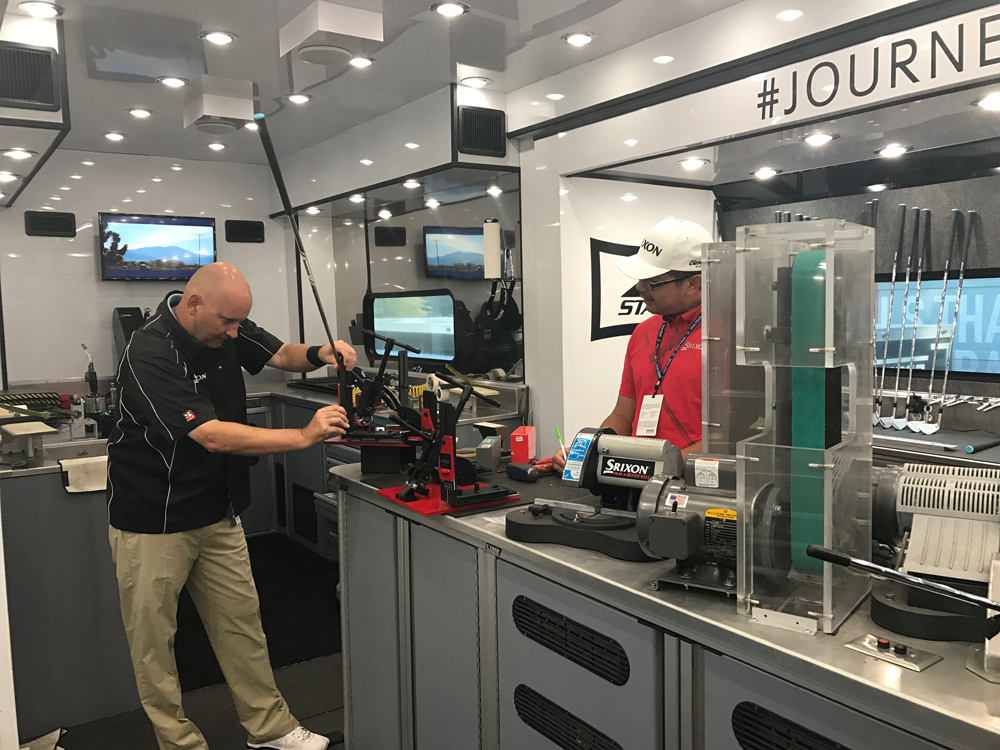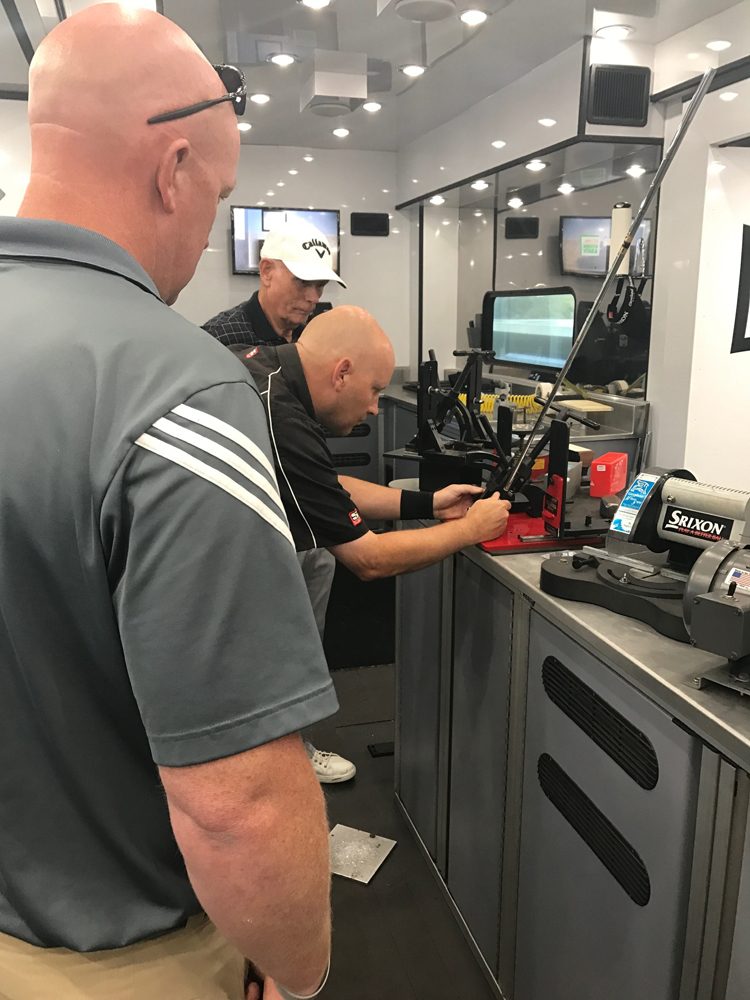Mitchell Golf’s Patrick Gallagher recently talked club fitting (who needs it and how often) with Scott Hassee of Champion’s Playbook. The following are some highlights of the podcast. Patrick covers everything from why it’s important to check your initial club’s specs to why checking your specs after an initial fitting is necessary to improve your game.
One of the first things Scott asked Patrick was to share some of his experiences with tour players and the need for players to get the right equipment.
 On my side of the industry, I am able to get out and see in tour vans in action,” states Patrick. “I see the level of detail that players are putting into their equipment. They are constantly making swing and equipment changes, It’s cool to see how they tinker all the time. They are so aware of their equipment to make their golf flight better and their swing better, all depending on how the course changes. These are differences that they can feel when they play. If something isn’t right, they go back to the techs in the tour van and get adjusted. It’s all quite something to see.”
On my side of the industry, I am able to get out and see in tour vans in action,” states Patrick. “I see the level of detail that players are putting into their equipment. They are constantly making swing and equipment changes, It’s cool to see how they tinker all the time. They are so aware of their equipment to make their golf flight better and their swing better, all depending on how the course changes. These are differences that they can feel when they play. If something isn’t right, they go back to the techs in the tour van and get adjusted. It’s all quite something to see.”
CP: There is a disconnect between the average player and some of the higher handicappers. They ask “Do I need to get fit? Is it that big of a deal? I am really not that good.” For the average player, we are talking someone above a single-digit handicap.
“I think that it is almost more important for that type to get down the proper swing weight, total weight, proper length, shaft flex and of course and loft and lie angle. These factors are so important for someone who is trying to improve.
The disconnect is that they think that they are not good enough to get fit. They try to get better by going through a lesson program with a club that doesn’t fit them. Then they get frustrated and the next thing you know they are giving up, they are quitting.”
“Golfers need to be aware of the fitting that has to happen after the initial fitting,” adds Patrick. “Make sure you spec out the clubs before you hit them so you know where to start from. Use it as base point. You want to make sure the club set that was ordered is right. Spend the extra two minutes with the student. Take accountability, and that little extra attention will give you a customer for life. That extra customer service touch goes a long way.”
CP: What are some of the pitfalls of fitting? There seems to be so much information out there. It makes it hard to keep up with it all.
“I think the fitting process should always be evolving. There should always be follow up. Every few lessons you should check to see the impact of your adjustments. Remember, there isn’t a standard in the industry on what should be a standard loft and lie angle. And manufacturers are different in what they consider standard. That’s why it’s important to know your specs when switching from one club to another. Have those specs recorded. Then you always have a baseline to go back to.
 At Mitchell Golf, we host Repair, Build, and Alter classes that offer valuable training in this area. Again, the process is constantly evolving, and you must evolve with the equipment. Some of the best instructors come to our school because their students want to tinker and they want to stay on top of it.”
At Mitchell Golf, we host Repair, Build, and Alter classes that offer valuable training in this area. Again, the process is constantly evolving, and you must evolve with the equipment. Some of the best instructors come to our school because their students want to tinker and they want to stay on top of it.”

